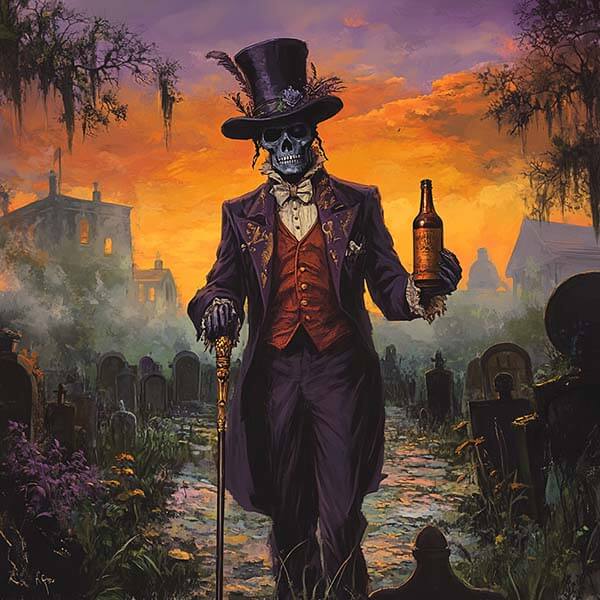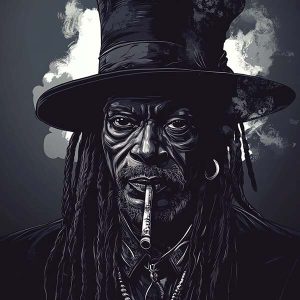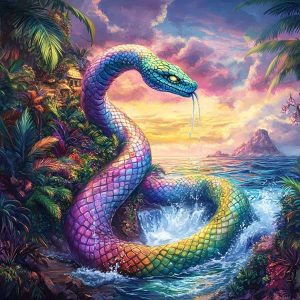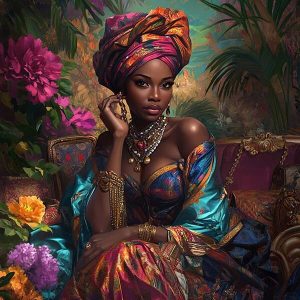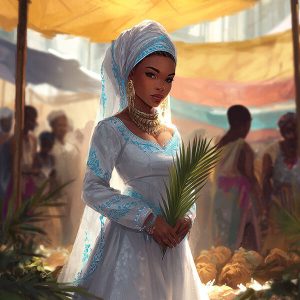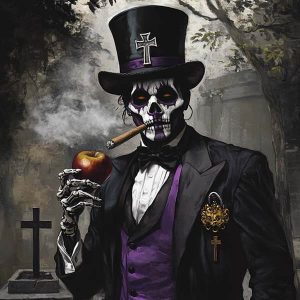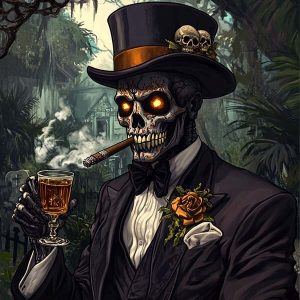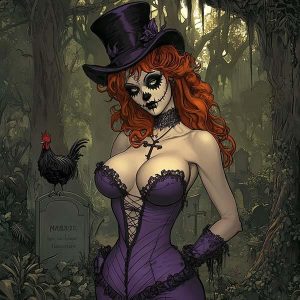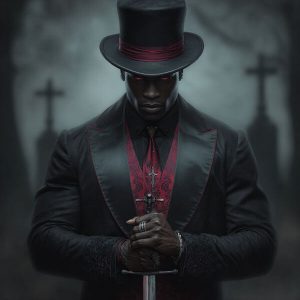Rada Loa
Calmness, Healing, Wisdom, and Benevolence
The Rada Loas are the most essential in Vodou. They originate from Vodun in the Kingdom of Dahomey, which is modern-day Benin.
Ghede Loa
Death, Afterlife, the Underworld
The Ghede Loa represents death, the afterlife, and cemeteries. They are also tricksters and protectors of the dead and are associated with resurrection, humor, and debauchery.
Petro Loa
Hot-Tempered, Aggressive, and Revolutionary
The Petro Loa represents resistance, revolution, suffering, justice, and fiery behavior. It symbolizes the rage of enslaved peoples and their will to fight oppression.
Origins of Vodou
Haitian Vodou or Louisiana Voodoo are the versions most are familiar with in popular culture. However, this is an evolution from the practices of Vodun in Western Africa as it passed through the cultures of the Caribbean. Vodun was outlawed for practice by enslaved people in Haiti and other parts of the Caribbean. At the time, Haiti was known as St. Domingue and was controlled by France. Haitians had to adapt their Vodun traditions by masking their Loas as Catholic Saints. This led to what is commonly known as modern Vodou.
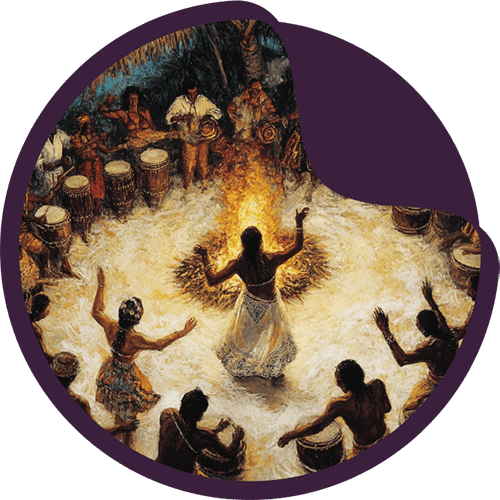
Vodun and Orisha in Western Africa
Vodun and a similar religion, Orisha, were practiced in the regions of Benin, Togo, and Nigeria. Both religions focused on worshiping pantheon deities, nature spirits, and ancestral spirits, but they also had key distinctions. Followers of these religions included the Ewe, Fon, and Yoruba peoples.
Vodun
Vodun practitioners include the Ewe and Fon people from Ghana, Benin, and Togo. This religion’s beliefs detail a supreme deity, Mawu-Lisa, who is a duality of male and female, representing the Sun and Moon. The supreme god is distant and uses Vodun spirits, or Loas, to communicate messages from followers. Practitioners honor Vodun, nature, and ancestral spirits.
Vodun worship takes place in a temple (hounfor) and commonly includes offerings of food, animals, alcohol, coffee, or tobacco. Divination and spirit possession can occur to allow the spirits to speak through a follower.
Vodun beliefs went on to influence Haitian Vodou, 21 Divisions from the Dominican Republic, and Louisiana Voodoo.
Orisha
The Yoruba people practice a similar religion, Orisha. Olodumare is the supreme deity, who is also distant from humanity. Orisha spirits handle followers’ requests and affairs.
Orisha worship included Ifá priests (Babalawos) and a central Orisha Orunmila, who could invoke other Orisha spirits. Dance, drums, offerings, and sometimes spirit possession were forms of rituals and worship.
Orisha influenced Trinidad Orisha, Cuban Santería, and Brazilian Candomblé.
Vodou’s Migration Through the Slave Trade
The traditions of Vodun and Orisha followed as enslaved people were brought to the Caribbean region. European colonies forbade the worship of these religions, which forced enslaved people to adapt their religions to appear Catholic. As they disguised their rituals to appease the Catholics, the Loas represented Catholic Saints. This adaptation created modern Haitian Vodou.
The Irish Influence
At the same time, many Irish, English, and Scottish indentured servants were arriving in the Caribbean. As they interacted with enslaved Africans, their stories of Celtic religion mixed with Vodou. A central figure in Vodou, Maman Brigitte, is believed to have been incorporated from Brigid, a Celtic goddess of wisdom, poetry, fertility, and smithing.
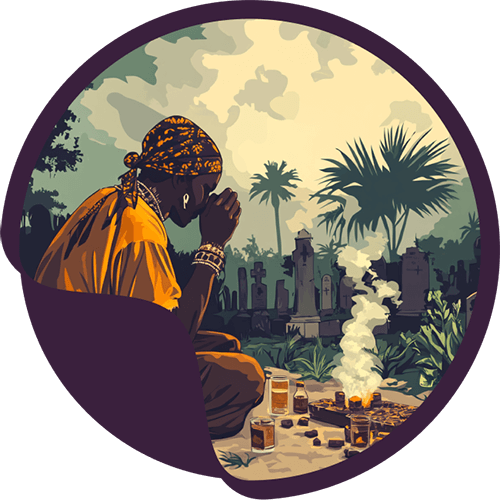
Modern Vodou Traditions
In modern Haitian Vodou, a mambo (priestess) or hougun (priest) invokes the loa. Papa Legba is the gateway loa who acts as the messenger to Bondye (the supreme deity) and the other loas. He guards the crossroads between the human and spirit world. As such, Papa Legba facilitates the communication with other loas.
Offerings and Rituals
During a ritual, followers typically leave offerings at an altar to appease the loa. During a ritual, followers typically leave offerings at an altar to appease the loa. Each loa has its favorite offerings, so a successful ritual must utilize the proper ingredients and divination. After honoring Papa Legba, the ritual can begin for the requested loa.

